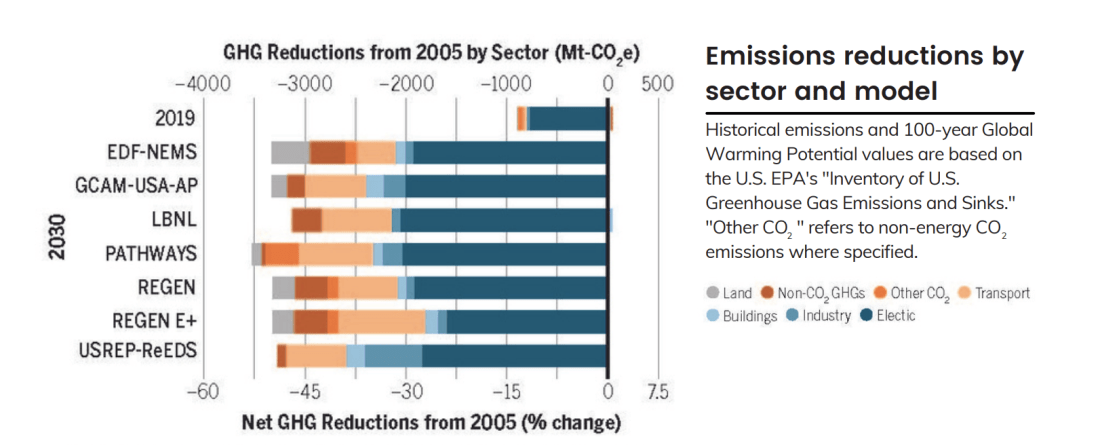
A. Zhao, S. Kennedy, & N. Hultman (2022). The U.S. 2030 Climate Target Remains Within Reach: Policy Opportunities to Achieve 50% Emissions Reductions. Center for Global Sustainability, 2 pp.
About one year ago, the United States offered a new and ambitious national climate target: to reduce our greenhouse gas emissions by 50–52% by 2030, relative to 2005 levels. In this critical decade, delivering on this nationally determined contribution (NDC) would set the United States toward net-zero emissions by 2050 and support a global 1.5℃-compatible future. Our previous work on opportunities for U.S. action has consistently shown that this NDC is a good target—it is ambitious, achievable, and aligned with global pathways to keep 1.5℃ within reach.
In a new paper published in Science, CGS researchers and five other leading U.S. modeling teams assessed pathways toward the U.S. NDC. The assessments, undertaken by CGS/Pacific Northwest National Laboratory, Electric Power Research Institute, Lawrence Berkeley National Laboratory, Natural Resources Defense Council, Massachusetts Institute of Technology, and Environmental Defense Fund, reaffirm that halving U.S. emissions is technologically achievable, economically reasonable, and politically within reach. While time is running short, achieving the target is possible through feasible policies implemented through a comprehensive, all-of-society climate strategy rooted in new federal policies, incentives, and regulatory actions, as well as continued and enhanced actions from states, cities, and businesses.
